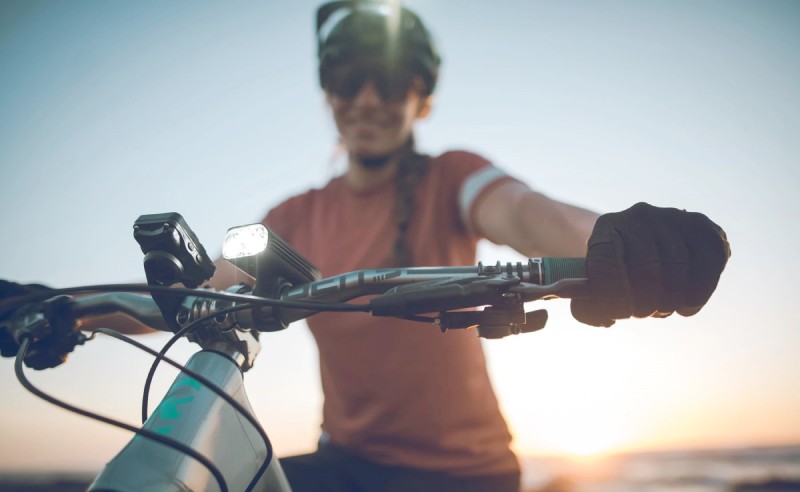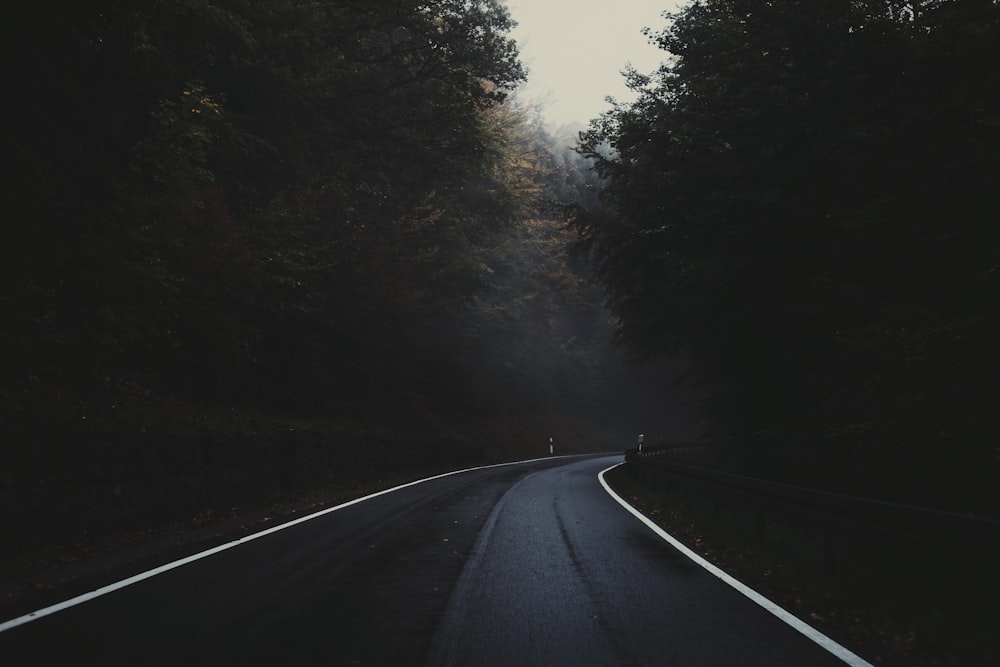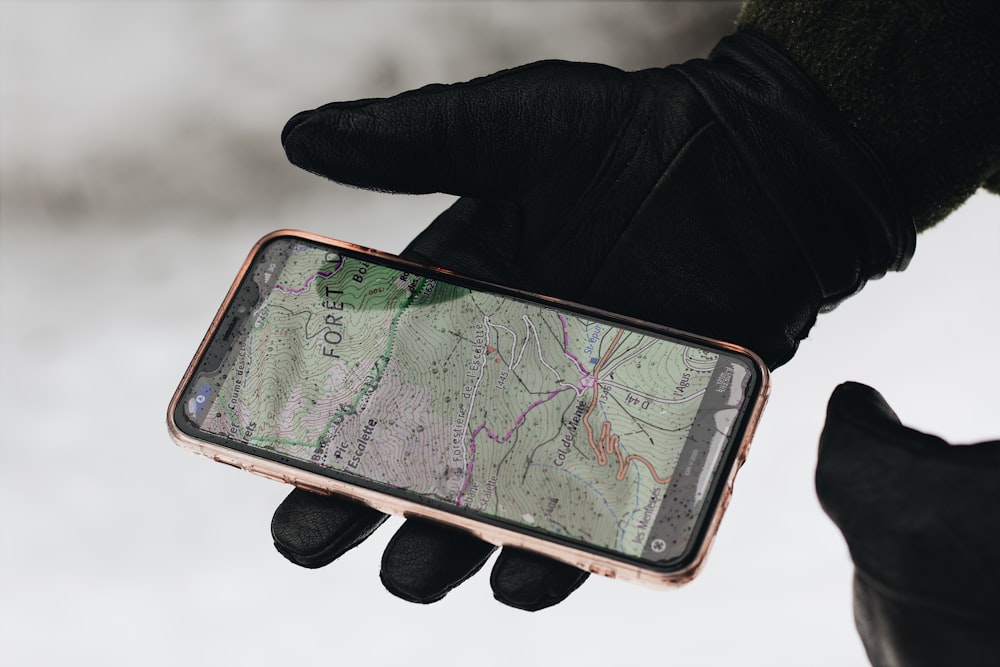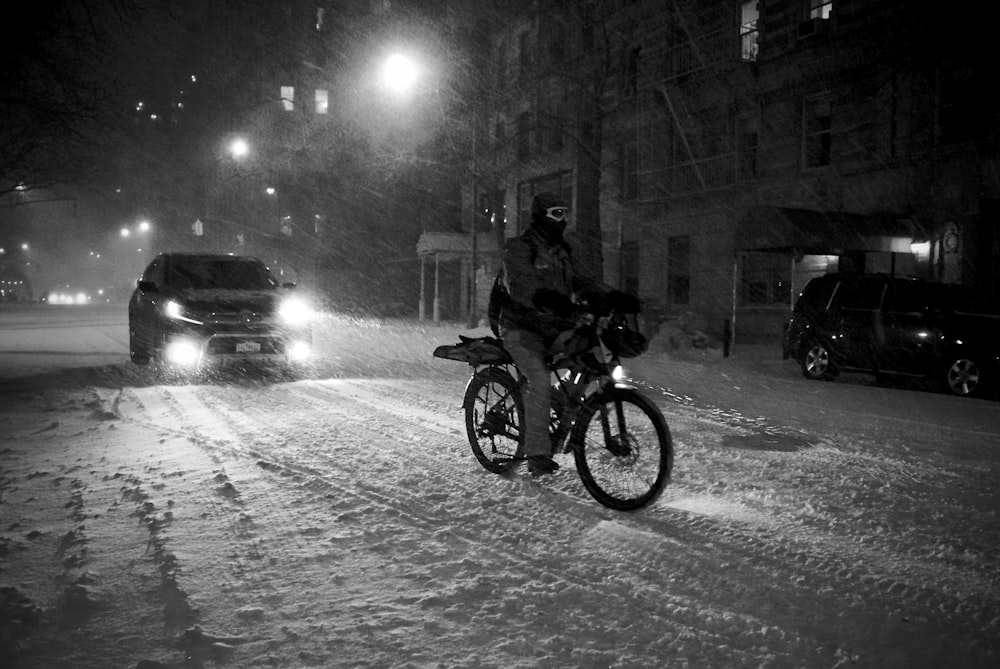10 Tips for Riding Your Bike at Night Safely

Credits: Jahangeer BM
Cycling is an environmentally friendly and enjoyable activity that boosts your health and well-being, so you should feel safe to cycle wherever and whenever you like. However, biking at night or in low-light conditions adds an element of danger, so you should prepare accordingly and know what equipment a bicycle must have when used at night.
These 10 tips will ensure you are ready to ride your bike on the darkest of roads without putting yourself or anybody else in danger.
1. Use Bright Front and Rear Lights

Source: Jenson USA
First and foremost, you must have high-quality bright lights when riding a bicycle at night. This is not just logical and safe – in many countries, it’s a legal requirement. At the bare minimum, cyclists who only use well-lit city streets should have a flicking red LED light on the back and a white one on the front. In fact, it’s a good idea to have these lights on for both day and night cycling.
However, these small LED lights differ from the lights needed for visibility in rural areas. They will help to make you visible to other road users, but to see in the dark you’ll need a proper headlamp. Decent bicycle headlamps that provide full visibility in pitch black conditions should have at least 400 lumens, preferably 800. If you’re riding off-road in unpredictable conditions, aim for 1000 lumens or more.
It’s best to get lights that clip off and recharge via USB, as this will save you money on batteries and is better for the environment. Carrying two small backup lights or a backup power bank is also a good idea.
If you plan on riding often at night, it may be worth investing in a dynamo-powered light that charges off the front wheel. This will ensure that you always have lights in an emergency and never have to worry about charging batteries.
Some cyclists find it convenient to use a helmet-mounted light that helps you see in the direction you are looking. This is especially useful in the event of a mechanical issue, or if you’re riding off-road and need to assess your surroundings. Just ensure it’s not heavy enough to knock your helmet out of position on your head.
Also, pay attention to where your light is shining. Some bicycle headlamps are as bright as car lights and can be blinding to oncoming traffic is pointing too high. If you’ve been riding off-road with a bright headlamp and return to a normal street, make sure the light is pointing downwards and reduce the brightness if possible.
2. Wear Reflective Clothing
The second most important and often overlooked aspect of bike riding at night is reflective clothing. Many people assume it’s sufficient to just wear your normal daytime clothing, but when it gets dark, you quickly turn invisible.
At the very least, you should wear a hi-vis reflective vest at night, like those worn by construction workers. These are cheap and fold up very small, so it’s easy to keep one in a small bag on your bike. You can slip it over any clothing and you quickly become a brightly lit beacon to any passing cars.
This is especially important when cycling in winter because the days are shorter and you may not be able to finish your ride before nighttime.
If you spend a lot of time cycling at night in unlit areas, you should invest in additional reflective clothing and accessories. Many cyclists find snap-on reflective ankle and wrist straps make them much more visible at night. Gloves with reflective material ensure that motorists can clearly see any bike hand signals you make at night.
You can also consider getting reflective stickers or material to attach to your helmet, shoes, or backpack. Reflective cycling socks can also make you a lot more visible for little money.
3. Avoid Dark and Unlit Roads

Credits: Thanos Pal
This is another obvious one, but it’s worth noting because cyclists who seldom ride at night don’t realize just how dark it can get. Small country lanes without street lights can become pitch black at night. Motorists on these roads might not react in time if they only see you when their headlights reach you.
You should be okay if you have good lights on your bike and reflective gear, but in general, it’s best to avoid unlit roads whenever possible.
If you absolutely have to ride at night, take some time to research a route that follows the most well-lit streets. If you do find yourself on a dark road without a safe shoulder, make yourself more visible by cycling a little further in the road. This way, cars will see you sooner and be able to slow down and pass safely.
4. Dress Warm
In some areas, temperatures can plummet at night. If you’ve only ever walked or driven in your area at night, you might not realize the difference it makes when you’re moving at speed and exposed to wind. If you usually dress warmly at night, wear an extra layer when cycling – preferably something wind or waterproof.
It’s good practice to carry a small waterproof windbreaker or fleece just in case you get stuck out on a late-night bike ride. If you have a large saddle or handlebar bag, you can keep it rolled up in there along with your backup lights, reflective gear, and repair kit.
5. Share Your Route with Someone

Credits: Mael Balland
Beyond just lighting and visibility, cycling at night is especially dangerous because there are fewer people around. If you are in an accident or have a mechanical breakdown, you might not be able to find anybody nearby to help. This means you could be left alone on a road at night for hours without help.
These days you seldom find an area without cellphone reception, but it’s still good to be prepared. Always let a friend know where you’re going by sharing your GPS route with them, as well as when you’ll be back so that they can alert the authorities if you don’t return.
Alternately, you can use Strava’s Beacon feature to let someone track your movement in real-time.
6. Make Your Bike More Reflective
In addition to reflective clothing, adding reflective elements to your bike can help increase your visibility. At the very least, you should have the standard front and rear reflectors that come with most bicycles. However, this is not enough for extremely dark conditions and only covers your front and rear.
To be fully visible from every angle, add reflective stickers to the sides of your frame and reflectors in your wheel spokes.
Many high-quality bicycle tires come with reflective sidewalls to increase side visibility at night. The advantage of reflective elements is that they are always visible to car headlights without needing battery power, so they’re an excellent backup for lights.
7. Ride More Cautiously

Credits: Clay LeConey
The road at night is less visible, which means hazards become more dangerous and you need to think more about your safety. Things like slippery leaves, oil spills, or potholes are very difficult to see when biking at night. A skilled rider may be able to avoid these in daylight, but at night, they become potentially lethal.
When riding a bicycle at night, always take it slow and pay extra attention to the road directly in front of you. Darkness also reduces our ability to perceive distance, so you might find you don’t brake as quickly as in the day. Keep a bit more distance between yourself and other vehicles at night to give yourself that extra time to brake if needed.
8. Inspect Your Bike Before Heading Out
Getting stuck with a mechanical fault on a night bike ride is not only a hassle but can put you in danger. There are usually fewer people or cars around to help at night, so you’re more likely to find yourself alone. If it’s very cold and you can’t fix the problem quickly, your body temperature could start dropping fast. Even worse, if you break down in an unsafe area, you could quickly become the target of criminals.
Make sure to maintain your bike properly and that everything on your bike works perfectly before you head out so that you know you’ll get home safe. Be sure to always carry any necessary tools, a bicycle pump, spare tubes, or a repair kit.
9. Ride with a Friend When Possible

Credits: Coen van de Broek
Safety in numbers! One of the best ways to stay safe when cycling at night is to have a friend join you. In fact, night or day it’s always safer (and more fun) to be in a group.
All the potential problems associated with night cycling – accidents, crime, breakdowns – are far easier to deal with if a friend is present. They can call for help in an accident or lend a hand for repairs, and the chance of theft or hijacking is massively reduced when two people are present.
10. Avoid Unfamiliar Routes
A late-night ride is not the time to explore new routes. Not only will you not be able to enjoy the scenery, but you could easily get lost.
Sat navs and GPS mapping apps are incredible tools that have revolutionized travel, but they’re not 100% reliable. Stopping at night on the side of the road to fiddle with your phone or navigation device is dangerous, so best stick to routes you know well.
Read Next
Best Commuter Bikes for Everyday Rides
A Complete Guide to Bike Security
Biking Etiquette & Safety Tips: The Written And Unwritten Rules



Bike at Night Safely. A late-night ride is not the time to explore new routes. Not only will you not be able to enjoy the scenery, but you could easily get lost.